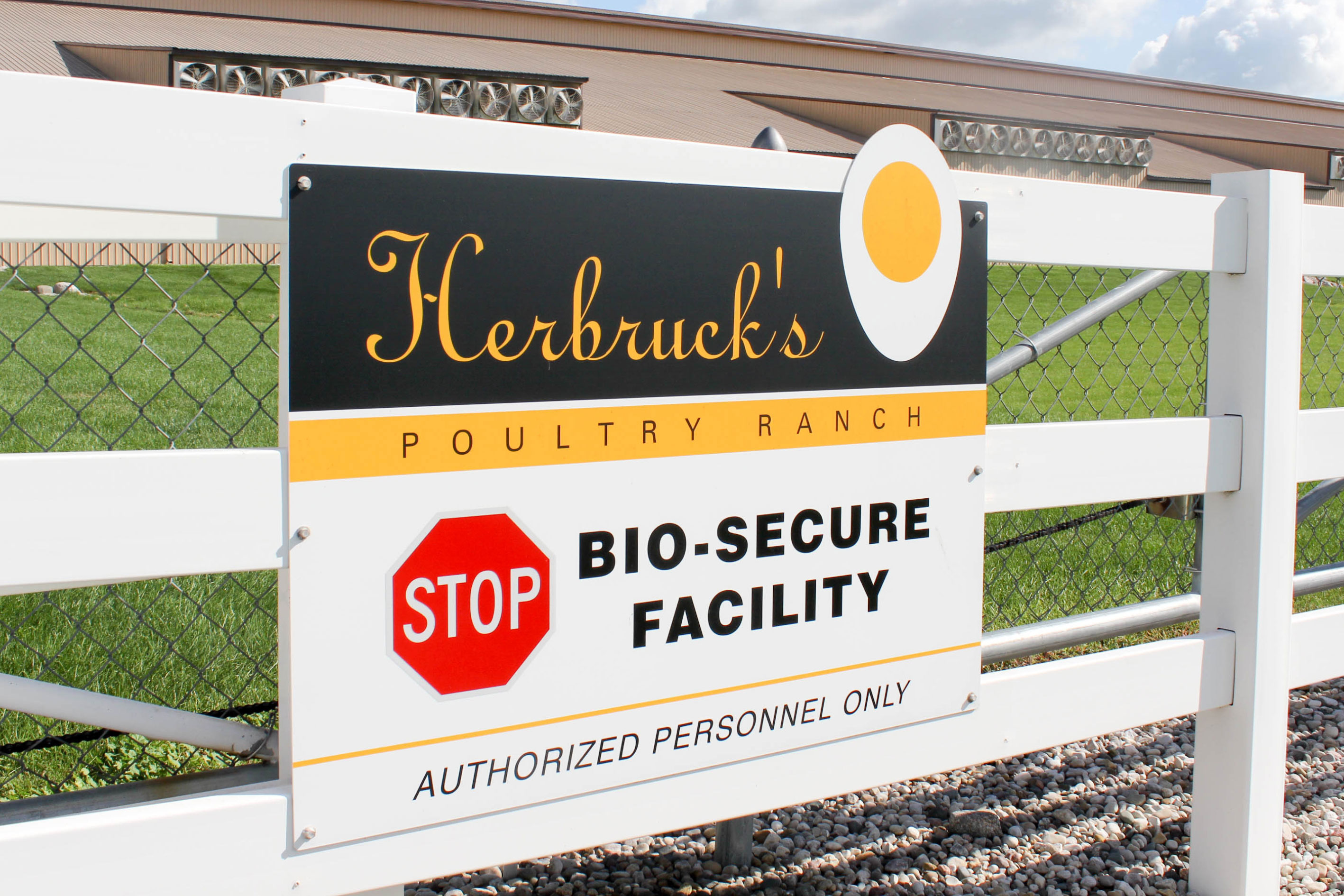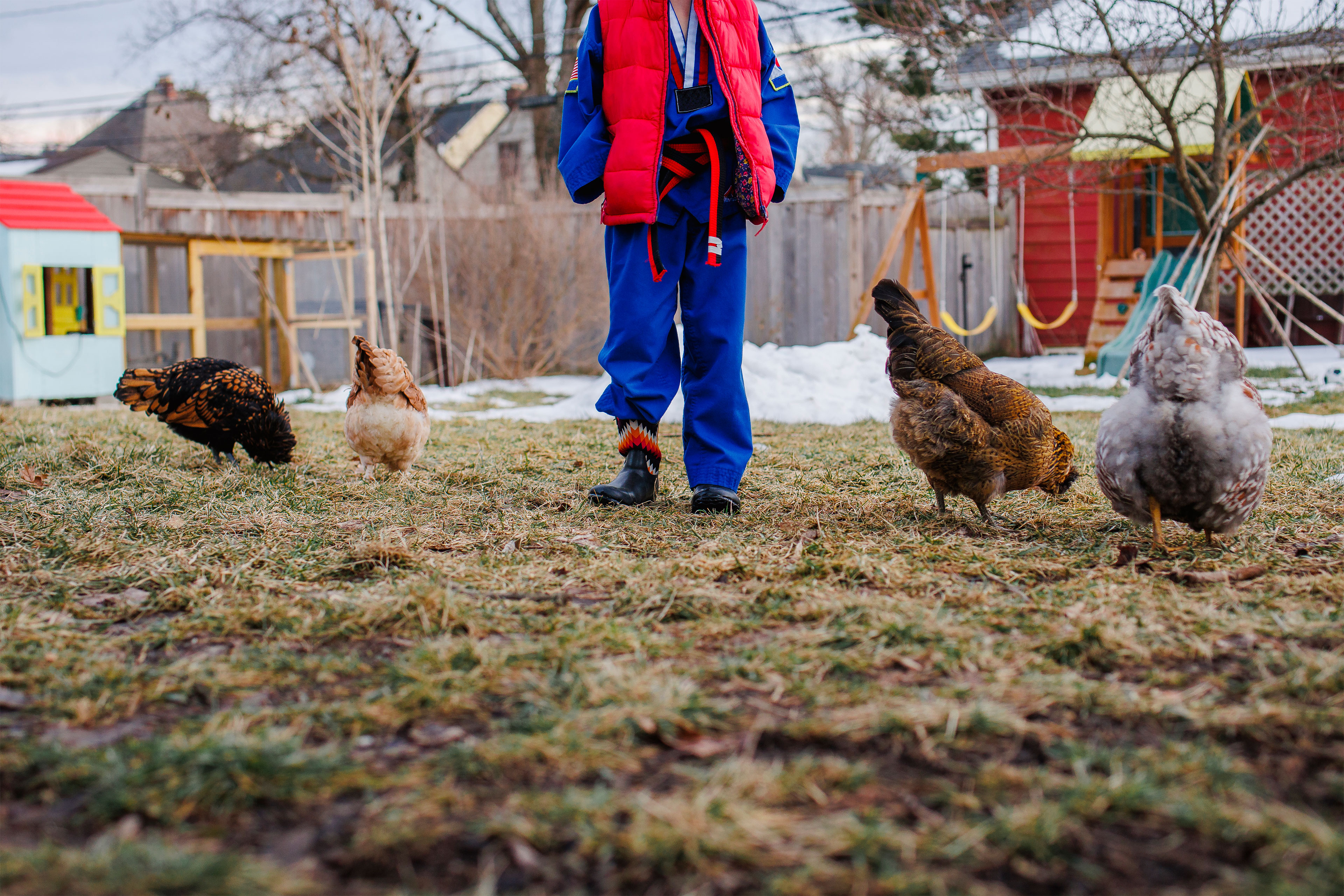Greg Herbruck knew 6.5 million of his birds wanted to die, and quick.
However the CEO of Herbruck’s Poultry Ranch wasn’t certain how the household egg producer (one of many largest within the U.S., in enterprise for over three generations) was going to get by means of it, financially or emotionally. One staffer broke down in Herbruck’s workplace in tears.
“The mental toll on our team of dealing with that many dead chickens is just, I mean, you can’t imagine it,” Herbruck stated. “I didn’t sleep. Our team didn’t sleep.”
The stress of watching tens of 1000’s of sick birds die of avian flu every day, whereas thousands and thousands of others waited to be euthanized, stored everybody awake.
In April 2024, as his first hens examined constructive for the extremely pathogenic avian influenza H5N1 virus, Herbruck turned to the tried-and-true U.S. Division of Agriculture playbook, the “stamping-out” technique that helped finish the 2014-15 fowl flu outbreak, which was the most important within the U.S. till now.
Inside 24 to 48 hours of the primary detection of the virus, state and federal animal well being officers work with farms to cull contaminated flocks to cut back the chance of transmission. That’s adopted by in depth disinfection and months of surveillance and testing to ensure the virus isn’t nonetheless lurking someplace on-site.
Since then, egg farms have needed to make investments thousands and thousands of {dollars} into biosecurity. For example, staff bathe in and bathe out, earlier than they begin working and after their shifts finish, to forestall spreading any virus. However their efforts haven’t been sufficient to include the outbreak that began three years in the past.
This time, the chance to human well being is simply rising, consultants say. Sixty-six of the 67 whole human circumstances in the USA have been simply since March, together with the nation’s first human loss of life, reported final month.
“The last six months have accelerated my concern, which was already high,” stated Nahid Bhadelia, an infectious ailments doctor and the founding director of Boston College’s Middle on Rising Infectious Ailments.
Controlling this virus has turn out to be more difficult, exactly as a result of it’s so entrenched within the international setting, spilling into mammals corresponding to dairy cows, and affecting roughly 150 million birds in business and yard flocks within the U.S.
As a result of laying hens are so inclined to the H5N1 virus, which might wipe out whole flocks inside days of the primary an infection, egg producers have been on the entrance traces within the battle in opposition to varied fowl flu strains for years. However this second feels totally different. Egg producers and the American Egg Board, an trade group, are begging for a brand new prevention technique.
Many infectious illness consultants agree that the dangers to human well being of continuous present protocols are unsustainable, due to the pressure of fowl flu driving this outbreak.
“The one we’re battling today is unique,” stated David Swayne, former director of the Southeast Poultry Analysis Laboratory on the USDA’s Agricultural Analysis Service and a number one nationwide skilled in avian influenza.
“It’s not saying for sure there’s gonna be a pandemic” of H5N1, Swayne stated, “but it’s saying the more human infections, the spreading into multiple mammal species is concerning.”

For Herbruck, it seems like battle. Ten months after Herbruck’s Poultry Ranch was hit, the corporate remains to be rebuilding its flocks and rehired many of the 400 staff it laid off.
Nonetheless, he and his counterparts within the trade dwell in concern, watching different farms get hit two, even 3 times up to now few years.
“I call this virus a terrorist,” he stated. “And we are in a battle and losing, at the moment.”
When Biosecurity Isn’t Working … or Simply Isn’t Occurring
To date, not one of the 23 individuals who contracted the illness from business poultry have skilled extreme circumstances, however the dangers are nonetheless very actual. The primary human loss of life was a Louisiana affected person who had contact with each wild birds and yard poultry. The particular person was over age 65 and reportedly had underlying medical circumstances.
And the official message to each yard farm lovers and mega-farms has been broadly the identical: Biosecurity is your finest weapon in opposition to the unfold of illness.
However there’s a spread of opinions amongst yard flock homeowners about how severely to take fowl flu, stated Katie Ockert, a Michigan State College Extension educator who makes a speciality of biosecurity communications.
Skeptics suppose that “we’re making a mountain out of a molehill,” Ockert stated, or that “the media is maybe blowing it out of proportion.” This implies there are two kinds of yard poultry lovers, Ockert stated: these doing nice biosecurity, and people who aren’t even making an attempt.
“I see both,” she stated. “I don’t feel like there’s really any middle ground there for people.”
And the challenges of biosecurity are utterly totally different for yard coops than huge business barns: How are hobbyists with restricted time and budgets purported to create impenetrable fortresses for his or her flocks, when any standing water or timber on the property might draw wild birds carrying the virus?

Rosemary Reams, an 82-year-old retired educator in Ionia, Michigan, grew up farming and has been serving to the native 4-H poultry program for years, educating youngsters the way to elevate poultry. Now, with the fowl flu outbreak, “I just don’t let people go out to my barn,” she stated.
Reams even swapped actual birds with pretend ones for youths to make use of whereas being assessed by judges at latest 4-H competitions, she stated.
“We made changes to the fair last year, which I got questioned about a lot. And I said, ‘No, I gotta think about the safety of the kids.’”
Reams was shocked by the information of the loss of life of the Louisiana yard flock proprietor. She even has questioned whether or not she ought to proceed to maintain her personal flock of 20 to 30 chickens and a pair of turkeys.
“But I love ’em. At my age, I need to be doing it. I need to be outside,” Reams stated. “That’s what life is about.” She stated she’ll do her finest to guard herself and her 4-H youngsters from fowl flu.
Even “the best biosecurity in the world” hasn’t been sufficient to save lots of massive business farms from an infection, stated Emily Metz, president and CEO of the American Egg Board.
The egg trade thought it discovered the way to outsmart this virus after the 2014-15 outbreak. Again then, “we were spreading it amongst ourselves between egg farms, with people, with trucks,” Metz stated. So egg producers went into lockdown, she stated, growing intensive biosecurity measures to attempt to block the routes of transmission from wild birds or different farms.
Metz stated the measures egg producers are taking now are in depth.
“They have invested hundreds of millions of dollars in improvements, everything from truck washing stations — which is washing every truck from the FedEx man to the feed truck — and everything in between: busing in workers so that there’s less foot traffic, laser light systems to prevent waterfowl from landing.”
Lateral unfold, when the virus is transmitted from farm to farm, has dropped dramatically, down from 70% of circumstances within the final outbreak to only 15% as of April 2023, based on the USDA.
And but, Metz stated, “all the measures we’re doing are still getting beat by this virus.”

The Combat Over Vaccinating Birds
Maybe essentially the most contentious debate about fowl flu within the poultry trade proper now’s whether or not to vaccinate flocks.
Given the mounting loss of life toll for animals and the rising threat to people, there’s a rising push to vaccinate sure poultry in opposition to avian influenza, which international locations like China, Egypt, and France are already doing.
In 2023, the World Group for Animal Well being urged nations to think about vaccination “as part of a broader disease prevention and control strategy.”
Swayne, the avian influenza skilled and poultry veterinarian, works with WOAH and stated most of his colleagues within the animal and public well being world “see vaccination of poultry as a positive tool in controlling this panzootic in animals,” but in addition as a software that reduces probabilities for human an infection, and probabilities for extra mutations of the virus to turn out to be extra human-adapted.
However vaccination might put poultry meat exporters (whose birds are genetically much less inclined to H5N1 than laying hens) susceptible to dropping billions of {dollars} in worldwide commerce offers. That’s due to considerations that vaccination, which lowers the severity of illness in poultry, might masks infections and produce the virus throughout borders, based on John Clifford, a former chief veterinary officer of the USDA. Clifford is at present an adviser to the USA Poultry and Egg Export Council.
“If we vaccinate, we not only lose $6 billion potentially in exports a year,” Clifford stated. “If they shut us off, that product comes back on the U.S. market. Our economists looked at this and said we would lose $18 billion domestically.”
Clifford added that might additionally imply the lack of “over 200,000 agricultural jobs.”
Even when these commerce guidelines modified to permit meat and eggs to be harvested from vaccinated birds, logistical hurdles stay.
“Vaccination possibly could be on the horizon in the future, but it’s not going to be tomorrow or the next day, next year, or whatever,” Clifford stated.
Contemplating only one impediment: No present HPAI vaccine is an ideal match for the present pressure, based on the USDA. But when the virus evolves to have the ability to transmit effectively from human to human, he stated, “that would be a game changer for everybody, which would probably force vaccination.”
Final month, the USDA introduced it might “pursue a stockpile that matches current outbreak strains” in poultry.
“While deploying a vaccine for poultry would be difficult in practice and may have trade implications, in addition to uncertainty about its effectiveness, USDA has continued to support research and development in avian vaccines,” the company stated.
At this level, Metz argued, the trade can’t afford to not attempt vaccination, which has helped eradicate ailments in poultry earlier than.
“We’re desperate, and we need every possible tool,” she stated. “And right now, we’re fighting this virus with at least one, if not two, arms tied behind our back. And the vaccine can be a huge hammer in our toolbox.”
However until the federal authorities acts, that software received’t be used.
Trade considerations apart, infectious ailments doctor Bhadelia stated there’s an pressing must give attention to decreasing the chance to people of getting contaminated within the first place. And which means decreasing “chances of infections in animals that are around humans, which include cows and chickens. Which is why I think vaccination to me sounds like a great plan.”
The lesson “that we keep learning every single time is that if we’d acted earlier, it would have been a smaller problem,” she stated.
This text is from a partnership that features Michigan Public, NPR, and KFF Well being Information.




